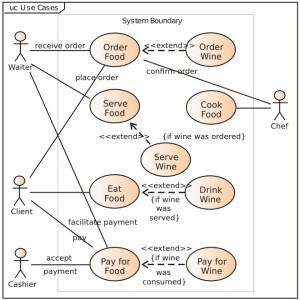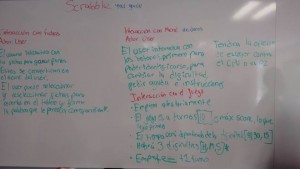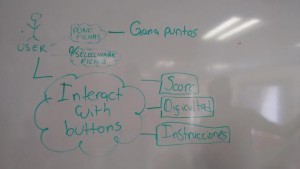--Originally published at diegotc2016
Understanding Use Cases
Now we’re going into a user focus. For getting a use case we need:
- Title: What is the Goal?
- Actor: Who desires the Goal?
- Scenario: How the Goal is accomplished?
How to make a Title?
Use a short phrase that has an active verb in it. For example:
Purchase Items

Identifying the Actors
An actor isn’t necessary a User, it can be a Customer, a Member, or an Administrator. As well an actor isn’t neccesary a human being, it can be for example a System.
An actor is a anything that has behavior and interacts with your system without being in your system. As I said before this post this can be a human being or not.
As well as on the movies, there are primary and secondary actors, but the name doesn’t have to be wether one is more important that other. The primary actor is the one that begins the process.
External Systems / Organizations
External data sources, web services, other corporate apps, tax reporting
Roles / Security Groups
Visitor, members, administrator, owner
Job Titles / Departments
Manager, payroll administrator, production staff, executive team, accounting
Identifying the Scenarios
An Scenario is simply a way in which an actor interacts with a program. For example:
Title: Getting players’ data
Actor: The Team’s Coach
Scenario: The coach gets into the “Sports Statistics and Performance Improvement” either in his laptop or in a mobile phone. Then the coach selects the sport he wants to evaluate, afterwards the coach types the name of the athlete and the computer will ask for the height, weight, % muscle, % fat, gym performance and sport performance of the athlete. The program will automaticlly display a gym routine based on great nutriologists, a gym routine based on excellent trainers and sport tips for the athlete based on outstanding athletes. If the athlete works well he/she will improve for his/her team
You have to tell how an actor interacts with an app in a coloquial way. It can be also written in steps.
| Purchase Items
Create new document Balance Accounts
|
Log in into the app
Write book Merge organizations
|
Diagraming the Use Cases
Is a UML graphic representation of several use cases and actors that interact at the same time. A Use case looks like this:

The stick man are the main actors that are in the Boundary system. Then write the main actions or scenarios, those are the circled ones. As you can notice there’s a box in this picture, everything inside the box is part of the system, you can also identify that all the actors are’nt in the system itself. Also a non human actor can be represented just as a box.
Employing Use Stories
It is simpler and shorter than a use case, but it still describes an scenario. It is written like this:
As a (type of user) Bank Customer
I want (goal) to change my PIN online
so that (reason) I don’t have to go into a branch








